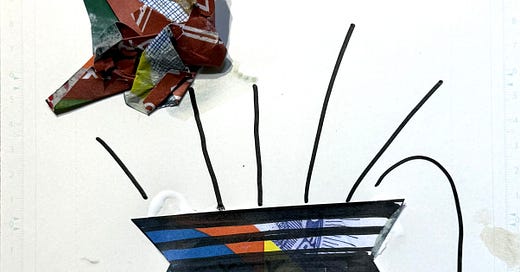The intersections between what publishers want and what you love making.
RECAP & free handmade prompt
Over the past 4 days my goal has been to share my approach to finding the intersection between what publishers want and what we love making.
I framed this as the most important problem to solve, because I believe if the goal is to get hired by top publishers, there are so many ways to spend our time, but many of them are completely futile if you don’t first define the space where you want to find success. Understanding this first piece, directs all your other actions.
Here’s what we’ve discussed over 4 days.
Here are some questions you might still have, and I will go over them in more detail in future posts, but for the sake of completion, let be give you some high level answers.
5 Questions Still Left Unanswered
How do I actually get my work in front of the right people?
By email. Find the people who hire illustrators. Send them an email. I say make it short, personal and include pictures, other people say different things.
I say more about this in the Breakthrough Diaries here (for paid subscribers)
What does a competitive portfolio actually look like in? 2025?
I don’t think a portfolio is just one place, I think it’s a collection of everything you put online. Yon need to put out good work consistently.
I say more about portfolios in the Breakthrough Diaries here (for paid subscribers)
How do I price myself and negotiate when I have zero industry experience?
Big publishers tend to offer a fair rate with a little bit of wiggle room. That said within reason you can ask for more, I’ve gotten 50% more on a rush job. Typically it’s single digit % that’s the wiggle room.
You could also ask around, or check a guide.
In
I regularly chat with people working in illustration and we compare notes, both of our experience and our research. Form a peer group or join one and share experience. A good one is the They have regular critiques, and the chat is a good place to discuss all things illustration.Their Mentorships, programs and podcasts are also highly recommended.
What’s the realistic timeline and financial reality of this transition?
For who?
Let’s just say there are quicker ways to earn a buck. This is not a job that offers any kind of financial stability at least not in the beginning, so I would recommend starting it as a side hustle, and expect to spend 1000 focused hours as table stakes to get test a hand.
The upsides, are some degree of control of your time, distribution for your art and ideas, the status of being a published illustrator.
How do I handle rejection and maintain momentum during the inevitable dry spells?
Friends who understand you help (start or join a peer group_. @illoguild meet everymonth via zoom we talk about all the things illustration, and give each other a boost.
’s Creative Peptalk is also a good way to help stay motivated.Every month I donate 3 free portfolio chats, as a bit to introduce more diversity in publishing. If you’d like to chat but couldn’t get one of those slots, I also offer slots to founding members of this newsletter.
TEN MINUTE ARTIST PROMPT
I’m not an idealist.
So as much as I appreciate and understand the anti AI sentiments, I don’t think we’re going back to a world without AI, and as such AI will play increasing roles in anything we do.
I’m not anti AI, I’m sceptical but curious.
I won’t let it near my kid, but I want to know what it can do.
I’m also, pro human. So in the rising and prevailing spirit of pro humanity, I made today’s prompt by hand, and I think, I will keep doing so.
Interpret the prompt however you like, add to the picture, draw your own, create your own version. Have fun.





